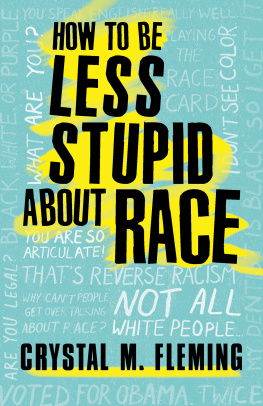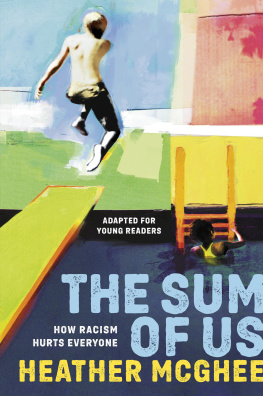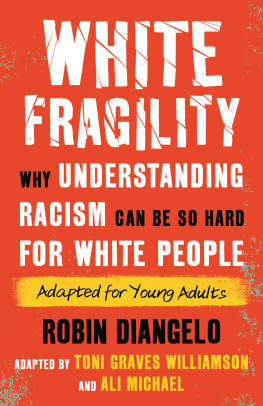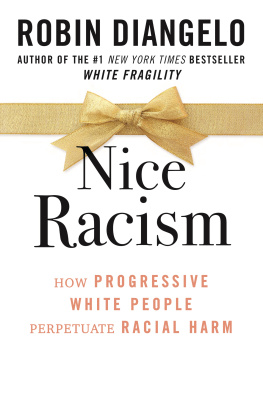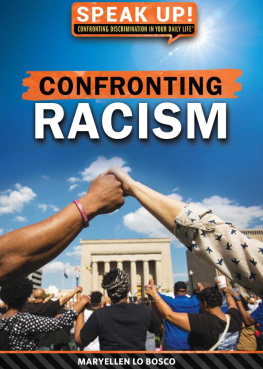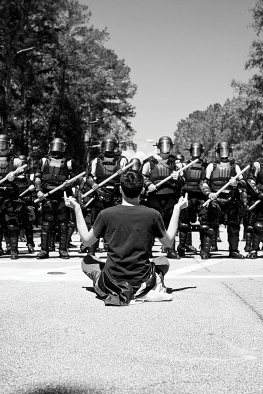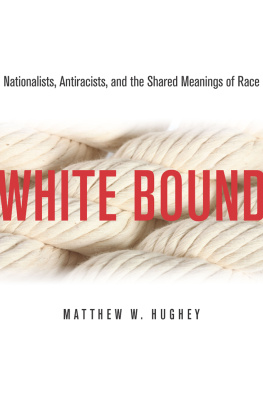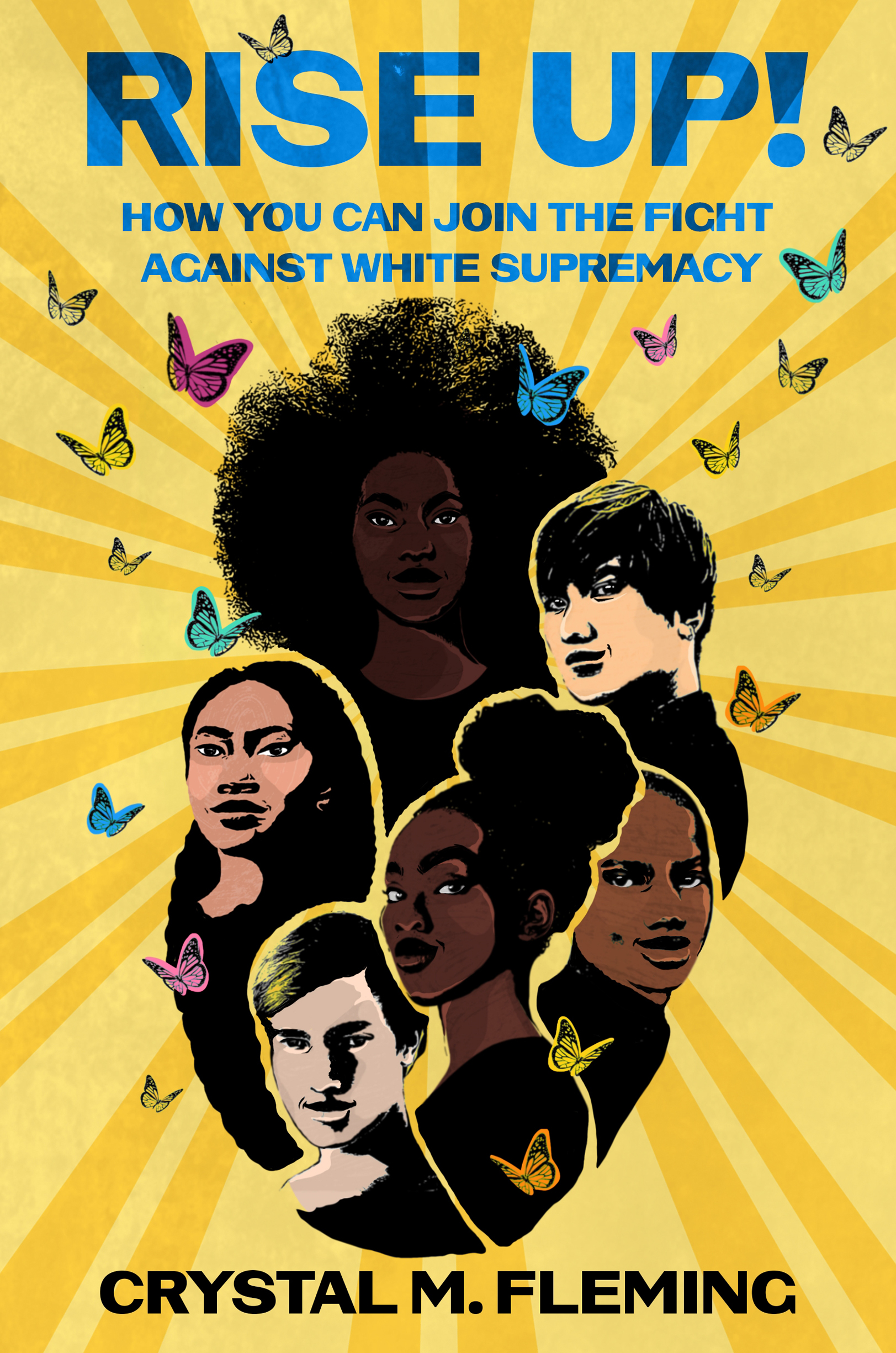Contents
Guide
Pagebreaks of the print version

The author and publisher have provided this e-book to you for your personal use only. You may not make this e-book publicly available in any way. Copyright infringement is against the law. If you believe the copy of this e-book you are reading infringes on the authors copyright, please notify the publisher at: us.macmillanusa.com/piracy.
Before we dive in, heres a heads-up about some of the decisions Ive made about racial and ethnic terminology in this book. All labels referring to racial and ethnic identities have been capitalized throughout the text. This includes terms like Native American, Asian American, African American, Hispanic and European. For clarity and consistency, the words Black and White are capitalized when referring to people or groups, even in cases when the words were lowercase in quoted references.
Finally, because this is a book about racism, I occasionally refer to racist terms such as the N-word (a hateful epithet weaponized against Black people) and the R-word (a hateful epithet weaponized against Indigenous people). If you dont know what these harmful words mean, all the better. But if you want an explanation, you can learn more by checking out this endnote.
What is racism? Where did it come from? Why does it still exist? And what can we do about it? These are the kinds of questions that may have led you to this book. These are also the kinds of questions that have inspired me as an educator, researcher, and sociologist. Over the course of my career I have spent years studying racism, and the struggle against racism in this country and in Europe as well.
Before we jump in, let me properly introduce myself! Im Dr. Crystal Marie Fleming, and throughout this book Ill be your personal guide in unpacking the history and ongoing realities of racism. I was born in Chattanooga, Tennessee, and Im now a professor and social scientist living in New York. And, even though Im African American and have spent many years studying issues of race, I did not know much about racism as a young person. In fact, it wasnt until I attended college that I really began to understand what racism means and how it operates.
My amazing mother worked hard to make sure I believed I could do anything I set my mind to. For Mom, this meant shielding me from racist beliefs. But it also meant that I grew up almost entirely unaware that racism and other kinds of injustice shaped the world around usand our experience of it.
I still remember the first time I consciously realized I was Black. I was in the second or third grade in elementary school. I had recently been admitted to the Gifted and Talented track because of my high achievement scores. One day, the teachera young White womancalled on me to read a passage from a book. When I finished reading, the teacher told the class that she liked how David, another kid in the class, and I pronounced the word aunt. We both said it like unt instead of ant like most of the other students. I looked at David and then looked at myself and realized that we both had brown skin. That was the first time I really thought about the fact that we were the only Black students in the class. And luckily, that realization was accompanied by a compliment, as the teacher told everyone that our way of saying aunt was correct.
Looking back on that moment, I remember feeling happy about having something in common with David. But I didnt know enough about racism at the time to question why there were only two of us in the Gifted and Talented track.
I also remember reading about slavery and the American Civil War in middle school and thinking that it was such a sad historywithout realizing that I myself was a descendant of slaves. At no time do I remember being taught to draw connections between past and present racism. Nor did I learn about the ways in which our society today is still structured by racial injustice. As far as I knew, racial oppression was mainly a thing of the past.
In fact, the first person to teach me about racism was not a Black personbut rather, a White man. In college, I took a sociology class taught by Dr. Ira Silverone of my favorite professors. The class addressed many forms of inequality, including racism. For the first time, I began to learn about injustice and realize how my own lifeand the lives of my family and community membershad been shaped by racism and other forms of oppression. I came to understand that being African American meant having to deal with and overcome systemic barriers that had long been invisible to me. I also began to realize that economic inequality and poverty were intertwined with racial injustice.
The class was a huge revelation for me and ultimately changed my life. Learning about inequality as well as activism for social justice sparked my thirst for knowledge and made me decide to become a sociologist. And, as I began to study these issues, my mom started to share with me her own reflections on experiencing and overcoming racism.
It is my hope that you, too, will be changed by reading this book. My goal is to share with you some of the knowledge Ive acquired about the history and sociology of racism, while also equipping you with tools for standing up against racism and making the world a better place.
As we prepare to dig into this vast and important topic, I want you to begin to think about these questions:
- How would you describe your racial or ethnic identity?
- Do you remember the first time you learned about race?
- Have you ever discussed race or racism with your family members?
- What, if anything, have you learned about racism at school?
If youre anything like I was as a kid, you may not have given much thought to these questions before. Or, perhaps youve directly experienced or observed racism and youre looking to learn even more. Either way, take this opportunity to consider your answers to these questionsknowing that they may change over time.
UNDERSTANDING THE MEANING AND ORIGIN OF RACISM
Since this book explores the origin and consequences of racism, its important that we clearly understand what the word means. Racism has two basic elements that we need to addressracist ideas and racist practices. The first part of racism, racist ideas, is the belief that human beings are divided into superior and inferior racial groups. According to racist ideology, these racial groups or races are thought to represent biological and cultural differences that are permanent and cant be changed. A major theme well explore throughout this book is the fact that racist ideas have distorted our cultural practices, media representations, and even our laws for hundreds of years.
Social scientists have shown that racist thinking doesnt just involve the use of racial labelsit involves ranking human groups according to race and creating a hierarchy in which some racial groups are said to be superior or inferior. In other words, if you just describe someone as Black, that doesnt necessarily mean that you are expressing a racist idea. You might just be using a social label that reflects their cultural identity. But if you describe Black people as a group that will always be inferior (or superior) to others because of their biology or culture, then you would


